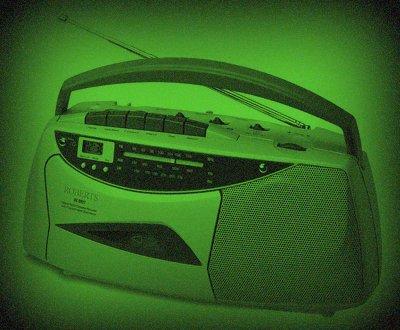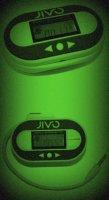ITC ‘Instrumental Trans Communication’
ITC is essentially any electronic device which can record or observe evidence of non physical entities.
This encompasses our current and future planned techniques to capture evidence of after death survival, using both audio and visual equipment.
(DRV) Direct Radio Voice
Introduction
There are probably numerous ways in which to construct a direct electronic communication device. Following is an outline of just one method which has been tested by the website author*.
The main inspiration for this work has been the ‘Spiricom’ type of spirit communication device (please see the ‘Links’ and ‘History’ pages for further information on this pioneering work).
The Spiricom components when broken down to their simplest form consist of a radio transmitter, which is paired with a radio receiver.
An audio tone is fed into the transmitter which converts the audio tone to radio waves which in turn are picked up by the receiver (Please see the ‘Sound Samples’ page for audio Tone download).
The interesting part is what happens in between the transmission and reception of the audio frequencies/radio waves. It is thought that these frequencies when modified through interaction with spiritual entities produce voices when heard through the radio receiver.
That’s the theory over in a very brief nutshell!
Design
The first designs were constructed from component level which did require some electronics knowledge, but now along with the digital age things are a whole lot simpler…
The receiver is easy as most people will already have one, a standard FM radio. A radio cassette may be preferred as it benefits from allowing any voices received, to be recorded onto cassette straight from the radio.

The next item is the transmitter, which thankfully can now be purchased from most high street or online electrical outlets!
What you will need is an ‘FM Audio Transmitter’ (Any brand should work) these are traditionally sold to connect to mp3 players etc, allowing them to transmit music to your HiFi or in car radio. Make sure the transmitter has a digital display so that you can fine tune the transmitting frequency.

You will also need a device to feed the audio tones into the transmitter. This could be a computer, CD player, or mp3 device.
Application
-
Prepare your audio playing device and connect it to the transmitter (do not power on the transmitter just yet).
-
Switch on your FM radio receiver and find a clear station with no music or sound, just background static/hiss.
-
Start your audio player to feed the sound tones into the transmitter and also switch the transmitter on. Using the controls on your transmitter, now tune the frequency to match your radio receiver.
-
When the tone is at its loudest and clearest you can then leave the transmitter set at this best frequency. Also positioning of the transmitter is possibly important, finding it best left in the middle of the room between all the sitters.
-
Now that you have a pure tone on the radio receiver you will probably find that this doesn’t seem to help the voices come through. What you will now need to do is de tune your radio receiver slightly so that the tone becomes slightly distorted.
You may need to tune the receiver often in a sitting as the sound can often drift, but this is probably a factor in achieving voice communication. You will probably notice too that the equipment is sensitive to movement in the room, both from the sitters and non physical guests.
Voices
The audio tone on this website is a recreation of the one used by the ‘Spiricom’ team, and consists of an audio tone generated from 13 separate frequencies which have characteristics of the human voice. The down side of this is that the voices when received are often robotic or tinny in quality. Work is being done on improving this but for now this will get you started.
You may get voices straight away, but then again it may take time to build up. As with all forms of communication try and keep to working at the same time of day, day of the week, or month that you sit.
Please feed back any results you have in using this method of communication and also any ideas/suggestions for improvement.
Gordon Perkins (ITC Technical Developer)